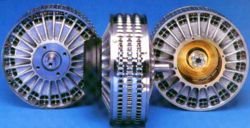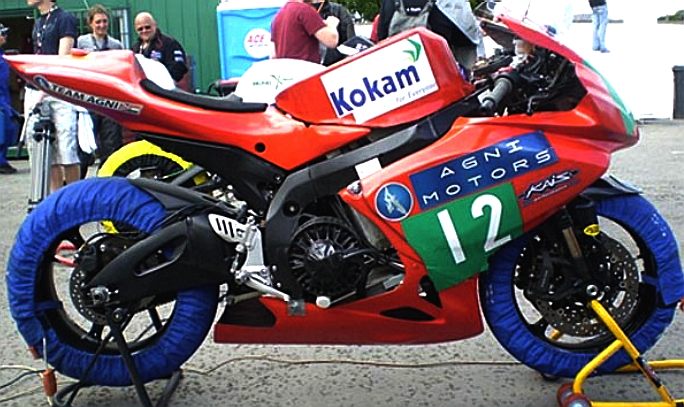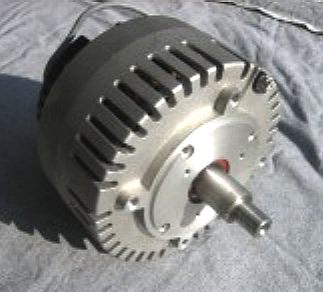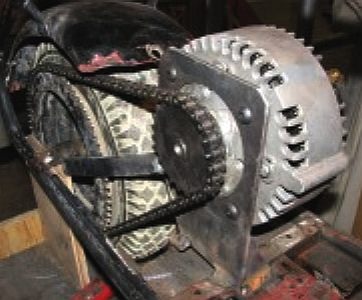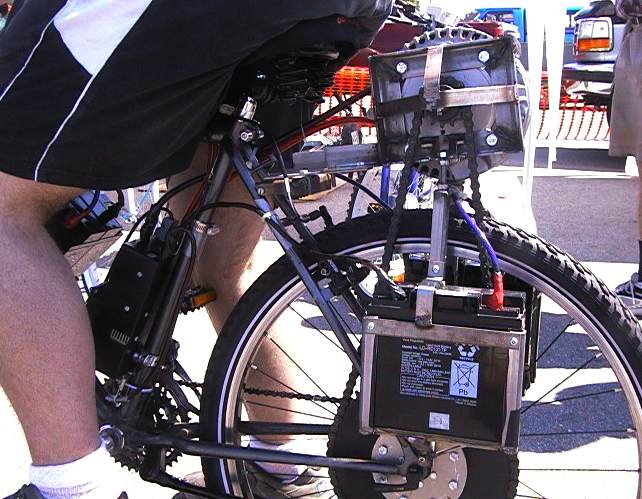|
CEDRIC LYNCH and his DISC ARMATURE MOTORS
|
|
|
Many years ago while attending a Battery Vehicle Society (BVS) event, our project manager, Nelson Kruschandl, met Cedric Lynch and Geoff Harding (famous for his electrically propelled human torpedo operations during the 2nd World War) and got a chance to talk batteries and see the electric cycle on which Cedric travelled from London to Birmingham on one battery, without stopping to re-charge.
Some years later in 1996 Nelson again met up with Cedric when a company called Refuelable Electric Vehicles was formed to develop Nelson's patent battery exchange system for road going cars, and they needed to consult an expert about motors.
The Lynch Motor - To Buy Online (click picture)
Cedric built his first motor to enter a competition to see who could go furthest on one battery charge in a boat. The story goes he cut up old baked bean cans to fabricate the interleaves of his armature. The motor produced was mated to an outboard motor shaft and his boat covered many more laps than any other boat that day. Soon after this Richard Fletcher as London Innovation invested in Cedric's designs and later Powergen also invested in Cedric's idea, helping to finance the production of his motor.
TECHNICAL DESCRIPTION:
The Lynch motor is an unconventional design with a disc armature. It marries the advantages of a conventional, wound armature motor with the benefits of a flat (printed circuit) motor. It is similar to a pancake motor, but is more powerful than any of these technologies. The disc armature has magnets on both sides, doubling the available flux density and shortening the magnetic path. It therefore packs more power per pound and per cubic inch than any other motor technology. Of course such a revolutionary motor is not for every application - it is not as cheap as wound field motors, but for many applications it is a far superior motor. It has a previously unheard of power to weight ratio and also power to volume ratio. It is also highly efficient because of the double magnet design and associated short magnetic path. It also includes integral fan cooling.
The Lynch motor is an important development which spurred other motor designers to improve their products to remain competitive, such as synchronus permanent magnet machines. As a result of the competition between manufacturers the cost of high performance motors and controllers has fallen dramatically. We hope the cost of solar cells also reduces to allow renewable transportation to develop as a viable alternative to carbon fuels.
ELECTRIC BIKE LEGEND
Cedric Lynch
built his electric bike around a mid-drive configuration, also building one of the worlds most efficient light weight
electric motors to power his rig reliably at 60-MPH for significant distances. He would later set several world records with his axial flux motor and bring it to market as the Lynch / Agni motor. Briggs and Stratton would eventually buy this technology which would lead to the Etek motor, which is now famous for making high speed efficient electric hot rods.
HISTORY
Cedric's
zero-emission motorcycle, which has a top speed of 120mph, was shown in action winning the world’s first zero carbon race – the TTxGP in the Isle of
Mann.
ETEK - US VERSION LYNCH MOTOR
The Etek motor is a brushed 25-pound pancake shaped motor that puts out enormous power for its weight. Depending on amperage and voltage the Etek can easily provide between 15-horsepower and 30-horsepower reliably and consistently (11-kW / 22-kW). A perfect platform for a powerful electric bike if you do not mind the weight. Although brushless motors are considered more modern, a brushed motor like the Etek allows the builder to use very affordable controllers.
Liveforphysics used a newer version of the Etek (the Agni motor), to achieve speeds of over 70mph, and dominate a recent hill-climb event.
LINKS
http://www.electricbike.com/ebike-legends-converge-in-bay-area http://www.whtimes.co.uk/news/potters_bar_inventor_praised_by_wallace_gromit
Although originally designed by Cedric Lynch, virtually identical motors are now manufactured by separate companies. A variant design is also being manufactured in Germany:-
AGNI MOTORS
aaShed No. 37/38, Sector 1 Kandla Special Economic Zone (K.S.E.Z) Gandhidham (Kutch) 370 230 (India)
+91 (0)2836 253 114
LYNCH MOTOR COMPANY
49 Rue Tenbosch, Bte. 3, bcelles B-1050 Brussels Belgium Phone: +32 2 648 3725 Fax: +32 2 646 7846 Lynch Motor Co is the original
management company: their motor is now made in Wales.
SCHILLER GROUP
Scholzenviertel 7 64625 Benzheim-Zell Germany Helmut Schiller claims to have
designed an improved motor.
More information
4QD-300-48 controller suitable for Lynch
The information on this page and site about Cedric's motor is supplied in good faith. We have no connection with any of the manufacturers concerned other than as stated, hence cannot supply information about the motor or its applications. Please contact the manufacturer direct.
4QD's home page of motor speed controllers for battery operated motors 4QD's FAQ sheet on battery motors and controllers
The Solar Navigator - SWASSH (Small Waterplane Area Stabilized Single Hull) test model 2012 The latest Solarnavigator is designed to be capable of an autonomous world navigation set for an attempt in 2015 if all goes according to schedule.
|
|
|
AUTOMOTIVE | EDUCATION | BLUEPLANET | SOLAR CAR RACING TEAMS | SOLAR CAR RACING TEAMS | SOLAR CARS |
|
|
This
website is copyright © 1991- 2013 Electrick Publications. All rights
reserved. The bird logo |
